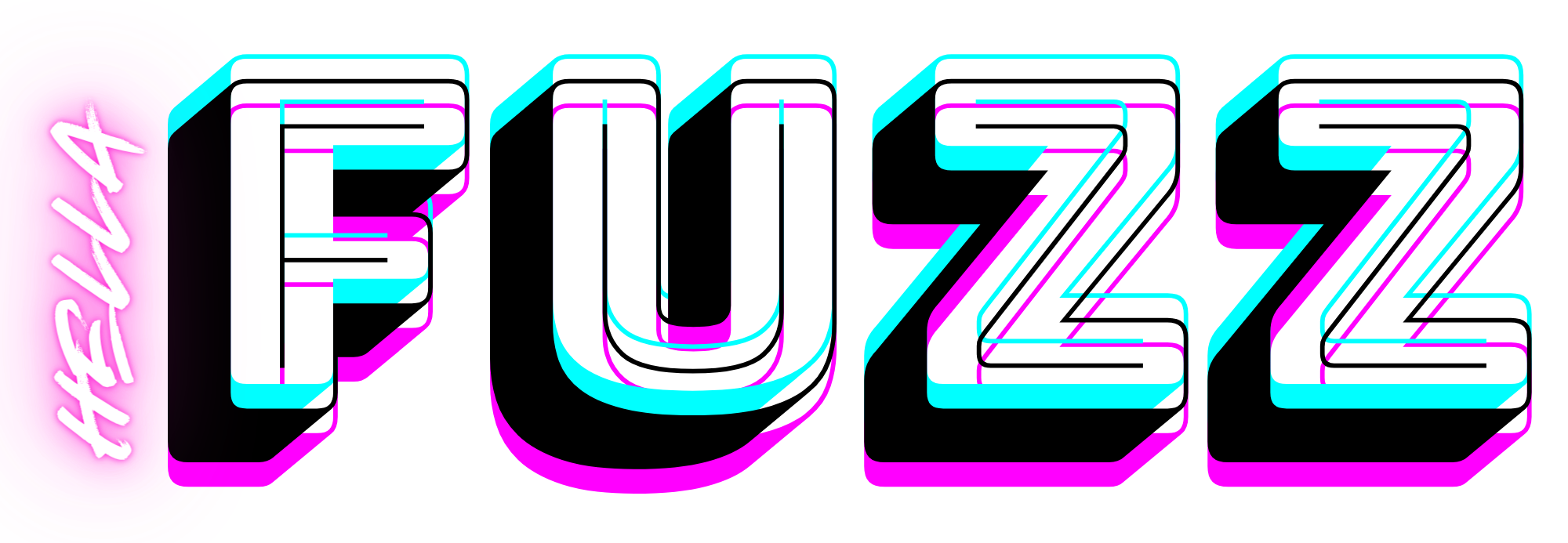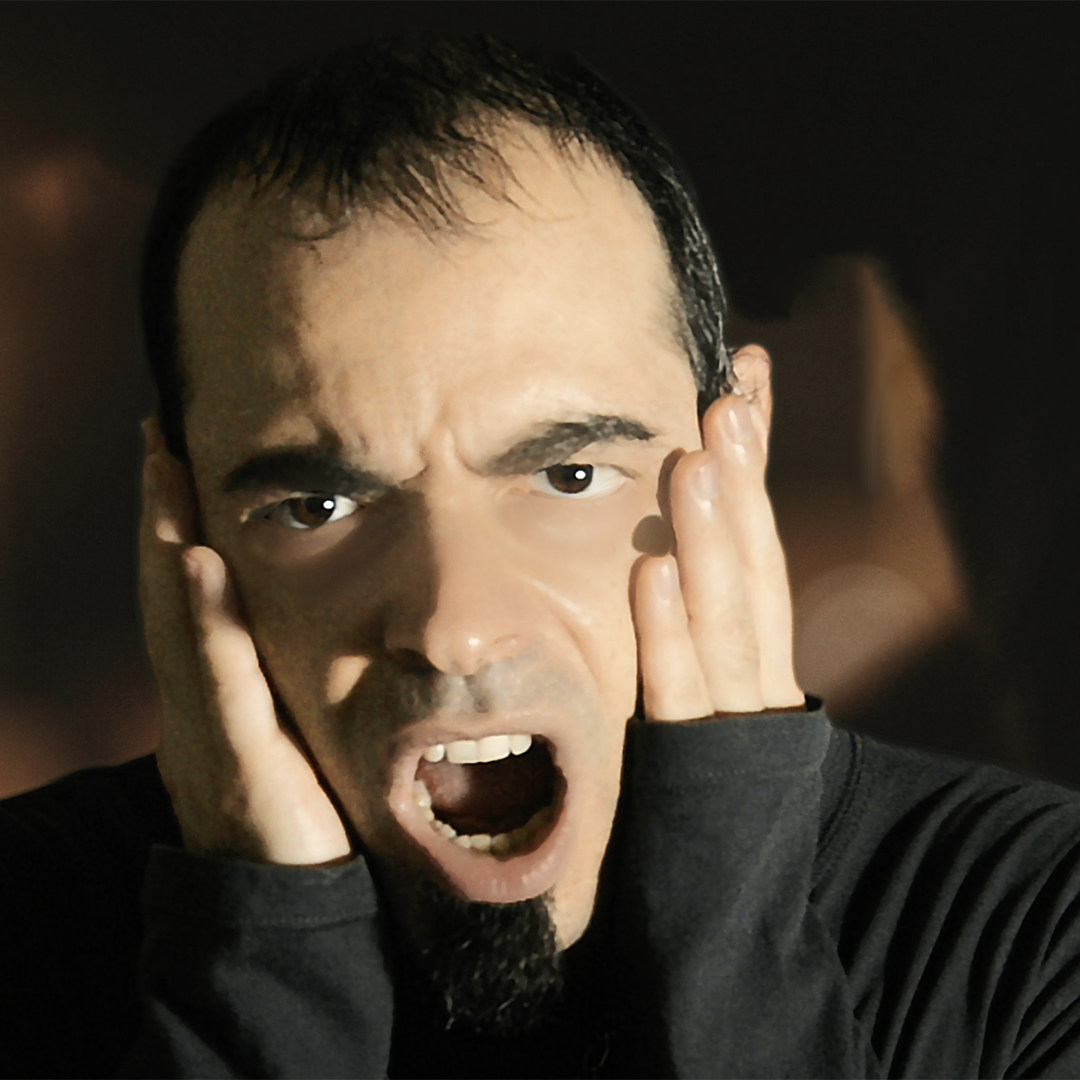What’s the story behind your latest song/album?
The latest song by Alma Lunar is called En la médula (In the Marrow), and it forms a conceptual continuation of a previous track titled El hombre que soñó el fin (The Man Who Dreamed the End). Both songs are deeply connected not only through their sonic landscapes, but also through a visual storytelling. The two videos together (which can be seen in the Alma Lunar’s YouTube channel) tell the fragmented, dreamlike story of a man who becomes trapped in his own subconscious—locked in a dimension called “the marrow,” a liminal space between memory, trauma, and oblivion.
The story unfolds in a surreal atmosphere and although it has its own identity, it may be influenced by my readings of Jorge Luis Borges and H.P. Lovecraft, two authors that I really like. From Borges, perhaps the best-known writer of my country, you can see clearly the idea of infinite, labyrinthine spaces of the mind, the blurring between dreams and reality, and the philosophical exploration of identity. From Lovecraft, the sense of cosmic dread, the idea of knowledge as a curse, and the feeling that something unknowable is always lurking just beneath the surface.
The man in the story is pursued by a shadow—an entity that represents his buried trauma. He finds himself speaking with a mysterious woman who seems to know more about his past than he does. This figure can be seen as his conscience or a guide through the underworld of his own psyche. Through these two songs, I wanted to explore the psychological aftermath of guilt. Both songs are available on all major platforms (YouTube, Spotify, Deezer, Amazon Music, SoundCloud), and I strongly recommend watching the videos in order to fully experience the narrative and aesthetic journey.
Here are the links:
- El hombre que soñó el fin: https://youtu.be/u6TQHf73PJI
- En la médula: https://youtu.be/_mbBcpaa8eU

How has your creative process evolved over the years?
Although the foundation of my creative process has remained quite consistent over the years, it has certainly evolved in depth and intention. I usually start with a concept—an abstract emotion or philosophical idea that resonates with me. From that seed, I begin shaping the music. For me, music always comes first than the lyrics. With that concept comes a melody, a texture, or an atmosphere—a certain emotional colour that defines the soul of the piece. Then the lyrics come, often as a response or a translation of the feelings evoked by the music.
While my initial approach hasn’t drastically changed, what has evolved is my relationship with the act of creation itself. In the beginning, I was focused on simply doing my best with each song, learning the tools, pushing myself technically and emotionally. But over time, I became more conscious of the importance of artistic identity. That search for authenticity has become more central in my creative process.
I have a wide and eclectic taste in music—I can enjoy anything from the most extreme black metal to soft pop, ambient, electronic, rock, and beyond. That variety sometimes feels overwhelming, because it offers so many paths to explore. But in the context of Alma Lunar, I always return to the emotional depth and sonic darkness that define the project. Musically, my influences are diverse, but some of the key bands that have shaped Alma Lunar’s aesthetic are Moonspell, Paradise Lost, and Tiamat. What I admire most about them is not just their sound, but their commitment to evolution. If you look carefully at much of their discography, to a greater or lesser extent they do not repeat themselves— they seem to grow in new terrain with each work. They follow their own vision, even if it means moving away from what fans might expect. That’s a huge lesson for me: that true artistry lies in the exploration. The music is not about a genre or fame, but about staying true to your own transformation as a person and an artist.
What’s one misconception people have about being a musician?
I think one of the biggest misconceptions people have—especially when it comes to independent musicians—is the idea that being a musician is all about creating music, performing, and maybe enjoying some level of fame or admiration. While that might be true for a big percentage of mainstream artists, the reality for the vast majority of us, particularly those of us working independently, is something entirely different.
As an independent artist, I don’t have a management team or a marketing department behind me. I do absolutely everything on my own. I write, record, produce, mix and master my music. I also design the artwork, direct and edit my music videos, create all the visual content for all the platforms, manage my social media, write the press releases, contact blogs, curators and radios. It’s a full-time job, and most people don’t realize how demanding and overwhelming it can be. Either you do it all yourself, or you pay people to do it—which, for most independent musicians, is simply not financially sustainable. The more skills you have outside of the music, the more likely you are to survive in this new ecosystem.
The game has changed a lot in the music business in these years. We live in a time where, thanks to the digital platforms, we have more access than ever before to the global audiences. That’s the good news. The challenge, however, is that everyone now has the same tools and want the same: to be heard. So, the competition for the attention is massive. Streaming has created a system where exposure is abundant, but compensation is scarce. Most listeners don’t know that the majority of streaming revenue goes to major labels and top-tier artists, while independent musicians get fractions of a cent per play. Also, the algorithm doesn’t work in your favour unless a lot of people engages with your content. That’s why simple actions—like subscribing, commenting, sharing—are so valuable, because it helps to break the invisibility.
So, if there’s one thing I wish more people understood, it’s that supporting independent artists isn’t just about listening to a song once. It’s about showing up, engaging, sharing, buying tickets, buying merch, leaving a comment. It’s about valuing the human being behind the art. Because behind every independent song you hear, there’s likely someone who sacrificed a lot just to bring that piece of music into the world.
If you want to be an independent artist you will have to face all that, but, beyond this, my advice is to enjoy the process of making art and focus on your artistic and human growth, which is what will allow you to develop as a person.
What’s a piece of advice you wish you had received earlier in your career?
If I could go back and give myself one piece of advice at the very beginning, it would be this: perfection doesn’t exist, and the road is built through mistakes. I wish someone had told me, clearly and without romanticizing it, that things rarely go the way you plan at first—and that’s not a sign of failure, it’s part of the process. Making mistakes, getting frustrated, doubting yourself—all of that is not just normal, it’s necessary. Growth is often uncomfortable, and that discomfort is what forces you to evolve.
What I’ve learned is that art is not about flawless execution—it’s about expression, honesty, and persistence. It’s more important to start, to try, to learn by doing. That being said, I always believed that professionalism is non-negotiable. Even when you’re experimenting or just starting out, you should always aim to give the best version of what you’re capable of in that moment. Not to impress others, but because respecting your own work is the foundation for growth. Taking your art seriously is what allows others to take it seriously too.
Another important lesson I learned the hard way is about the people you surround yourself with. It’s essential to work with people who share your vision or at least support your direction. Toxic environments, conflicts of interest, or artistic misalignments can drain your energy and stop you from moving forward. If the people around you are pulling you in a different direction than the one your heart is calling for, it’s okay to walk away and go solo. That decision might be hard, but it can be freeing. At the same time, don’t close yourself off to the possibility of collaboration. The right people—those who understand your language and respect your vision—can help you grow in ways you didn’t expect.
I’ve also learned that creative blocks are part of the journey, and there’s no shame in needing time or perspective. Sometimes the best thing you can do is step away from a project, let it breathe, and come back to it with fresh ears and eyes. Or talk to someone you trust, someone who speaks the same artistic language. One other perspective can make all the difference.
If I had truly understood all this earlier, maybe I would’ve been kinder to myself along the way. But at the same time, every misstep, every doubt, every wrong turn taught me something. And I think that’s part of the beauty of being an artist: you’re constantly becoming.
What’s next for you—any exciting projects or goals on the horizon?
There are several exciting things on the horizon for Alma Lunar. The upcoming step is a song titled El sueño de una perdición (“The Dream of Doom”), the continuation of what I call the “dream cycle”,which will be released on April 17th. It marks an important step forward in the sound and atmosphere of Alma Lunar. This song blends gothic rock with electronic textures and experimental nuances, creating an immersive and haunting soundscape. It invites the listener into a dimension of shadows, dreams, and psychological mystery—a space that feels suspended between reality and illusion. The song is more direct than the previous two, and it’s not instrumental. It brings the voice back to the forefront, both as a narrative element and as an emotional force.
What makes this release even more special is that it’s a collaboration with an old friend of mine, Gabriel Calarco—a talented musician with a deep and intuitive approach to composition. Working with him brought new energy and perspectives into the creative process, helping to shape the emotional landscape of the song.
El sueño de una perdición will be released alongside a lyric video first, followed later by a full music video. We’re almost done filming it this month, and although we’re working with very limited resources, we’re focused on creating something visually powerful and emotionally aligned with the atmosphere of the song. Like everything I do with Alma Lunar, the audiovisual aspect is just as important as the music itself—it’s all part of the same artistic world. I want every song to be like a window into something hidden, something worth discovering.
Alma Lunar Socials:
FACEBOOK: https://www.facebook.com/alma.lunar.music
YOUTUBE: https://www.youtube.com/@alma_lunar
INSTAGRAM: https://www.instagram.com/esteban_soundloop
OFFICIAL WEBSITE: https://almalunar.loop.fans
Latest Release:

